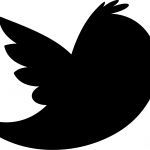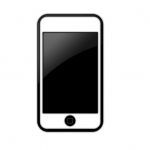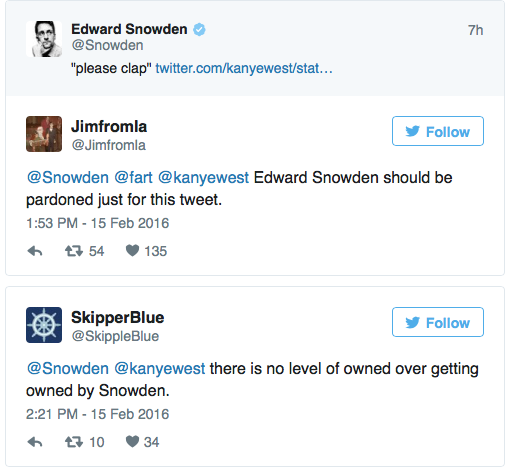Erik Qualman's Blog, page 489
February 18, 2016
Seven Ways to Boost Your Mobile Marketing in 2016

In the marketing world, predictions are everything. Having exclusive knowledge about the mobile industry is important. It prepares your brand for the best, and it protects you from the worst. Great, high-tech solutions have been introduced to smartphones in 2015. The advent of wearables, haptic technology, 3D advertisements and Google’s advertisement reworks all affect the mobile climate, and several emergent trends promise a bright year ahead.
Below are the seven biggest ways you can capitalize on 2016’s growing mobile space. Pay close attention to the market, because it’s always changing.
Tip One: Shift to Progressive Advertising
Native advertising might be old to mature economies, but mobile markets are just stumbling into it. This year, increasingly progressive advertising formats will emerge. Mobile video and in-app ads, specifically, are expected to make an impact.
Similarly, the market share surrounding banner ads is still big on emerging markets. Progressive ad formats are catching up, increasing mobile advertisement research in 2016.
Check out Honda’s mobile video ad:

Image credit: zeendo.com
Tip Two: Get Ready for Bigger Mobile Budgets
Mobile data has skyrocketed in recent years. Last year alone, mobile data traffic increased by 77 percent across emerging markets. While South East Asia and Eastern Europe have been driving growth from recently affordable 3G handsets, American markets are benefiting from the boost.
Constant mobile phone use grants incredible connectivity opportunities. Now, marketers can reach audiences anywhere, and at any time. Mobile marketing is a lucrative business, and Clickky reveals mobile marketing budgets have grown by 15 percent since the start of 2015. Hundreds of apps hit the market daily, raising the competitive bar.
See how mobile ad spend is still lagging behind mobile media consumption below.

Image credit: smartinsights.com
Tip Three: Plan for App-Centric Platforms
A Flurry, U.S. study revealed through Mobile Marketer states mobile users spend more time on mobile apps than television. Apps are popular, accounting for nearly 80 percent of the mobile user’s mobile time.
App usage is only growing, and innovative marketers are dominating app-based advertisement. As a testament to the growth, Google’s Senior Vice President of Search announced the company had indexed over 100 billion deep links in apps as of last October. Prepare your mobile platform for in-app advertising, because industry leaders are paving the way.
Here is a great example of how Zappos is taking advantage of App deep linking in their mobile Facebook ad campaign:

Image credit: sarlitt.me
Tip Four: Drive Information with Location
In 2016, a majority of retailers will adopt beacon technology. Location-based beacons, when powered through a competent mobile marketing strategy, will drive mobile marketing. In 2016, location-based services will have a significant impact on the consumer, enabling brands to shoot out micro-targeted offers.
Check out Taco Bell’s partnership with Waze mobile app to entice nearby drivers:

Image credit: slidesharecdn.com
Hyper-relevancy is an end-game goal for most marketers, and modern marketing automation networks are taking the mobile movement by storm.
Tip Five: Prioritize Engagement over Installation Numbers
Sure, app download numbers are incredibly important. Unfortunately, emerging mobile markets are a little backdated where retention and engagement are concerned. More than 80 percent of mobile marketing campaigns taking place in emerging markets focus on clicks, rather than engagement metrics.
Mobile penetration is changing this power balance, however. Keeping a customer will always be cheaper than finding a new one. In 2016, mobile marketers will adopt engagement-heavy strategies. App developers, in particular, will throw away previous number-pumping tactics. The app store’s front page might be important, but it’ll receive less attention as app marketers view customer engagement as a priority.
Tip Six: Streamline for Increased Online Visibility
In-app search will greatly increase a brand’s online visibility. In 2016, Google App Indexing will make deep linking a viable mobile marketing strategy. Google App Indexing boosts app navigability, contextual search and user experiences. The platform begins this year, so make sure you’re ready to embrace the change.
See how Trulia uses Google App indexing to their advantage:

Image credit: googlewebmastercentral.blogspot.com
Tip Seven: Don’t Prioritize Mobile Wallets
Mobile wallets, while picking up steam, are still far from perfect. Credit cards will be rendered obsolete by the mobile wallet, but 2016 won’t witness any big jumps. Despite big progress by Apple Pay and Samsung Pay, consumers are still sticking to their leather-bound pocketbooks.
For now, mobile wallets are a niche trend. While you should always consider the future of mobile-based payment platforms, placing too much stock in mobile wallets will lead to a loss of resources. Wait for retailers to upgrade terminals, and wait for big-name market players to develop further features, new security systems and usage options. Also, check out this article on text verification’s place in the fraud detection world to see how great providers are assisting mobile security.
[image error]
February 17, 2016
Ditch The BYOD Trend in 2016

Bring your own device (BYOD) policies were the cool new way to do business for the last few years. Instead of using company computers, phones, or tablets, employees were encouraged to bring their own devices from home, allowing them to streamline all of their tech usage.
It’s easy to see why management liked such policies – it cut costs and encouraged employees to take their work home with them, extending the workday by default. At the same time however, BYOD policies, especially when poorly managed, did tend to produce more security issues.
In 2016, it’s time to ditch the BYOD trend. In addition to security breaches, here are a few reasons why BYOD is waning in popularity.
Internal Upgrades
One of the most prominent reasons that BYOD practices entered the workplace was that employees not only owned their own devices, but their personal devices were often more up-to-date than company ones. Or, in the same vein, personal devices ran the preferred operating system – typically iOS – opposed to what the company was currently using.
Now, however, more companies are upgrading and making the shift to iOS, so employees no longer have a reason to use their own technology. This gives employers greater control over system compatibility and it also prevents employees from having to mentally switch between systems all day.
Data Protection Practices
BYOD policies not only ran a risk of data breaches when employees inadequately protected their personal systems, but they also made it more difficult for companies to maintain files when employees changed companies or even changed roles within the same company. Without proper vigilance, BYOD policies led to former employees walking off with company data still in their possession. Companies now recognize this risk and know that it’s too dangerous of an issue, especially for companies regulated by HIPAA, FERPA, and other privacy regulations.
Continued Costs
Although BYOD seems like it would dramatically cut company costs by preventing the need to buy large amounts of hardware, several years of BYOD practice has revealed that this isn’t the case. Rather, BYOD is full of both hidden costs and IT problems that can strain a company’s budget just as far.
In order for employees to use their own devices, they still needed to be issued the correct software, security breaches proved costly, and IT departments logged longer hours trying to get an array of devices in line with each other. The costs BYOD had promised to cut simply rose up in other corners of the budget.
After BYOD: What Comes Next?
If companies are going to ditch BYOD policies in 2016, how will the budget make the swap back to proprietary devices? The transition will likely be gradual and some companies will likely find ways to blend the two policies, particularly when it comes to devices like smart phones. Shared laptops, however, will likely become a thing of the past in short order.
Post-BYOD we will likely see a rise in company security practices. There were a lot of high profile data breaches in 2015 and that likely will influence this shift for many companies. Many who are transitioning out of this policy will also look towards the EU where BYOD never caught on. By mirroring European companies’ standard practices, we’ll see American companies phase out BYOD as the year goes on.
[image error]
Mobile Ordering Trends of 2016

It can get a little scary when thinking how fast the human species is advancing. Technology is moving forward at such an alarming rate that buying a product becomes a notable risk due to the pace at which it becomes obsolete. Technology has progressed more in the last 20 years than it had the previous 100 years before, and new discoveries will only increase the rate at which we develop technological devices in the years to come. This has had an effect on how certain roles are administered in the workplace. What used to be guaranteed job placement could start being replaced by self-service devices, eliminating the need for employees such as waiters, tellers and maybe even drivers.
We are all familiar with films such as The Terminator and I, Robot. The Terminator in particular has become a reference point for the consequences of what an overly advanced future could look like. Last year, a robot in a Volkswagen factory in Germany accidentally grabbed a worker and proceeded to squeeze him against a metal plate until it ended in his death. Although completely unintended by the robot registering the man was a car part, it still represents dangers. Perhaps the biggest danger right now is the inconsequential role humans will start playing in the work space. Mobile ordering is growing in convenience and popularity by the day.
Restaurants have been the most recent to implement this trend. It sees waiters falling by the wayside, with tables instead hosting interactive menus whereby patrons can digitally order food and drinks off a touch screen, with the order being sent straight to the kitchen. Some venues will still employ people to bring the food out once ready, however, others will notify you on the screen at the table when the food is ready to come and collect from the counter.
McDonalds has seen their market share fall consistently over the last two years, and one method they have discussed implementing to improve the customer experience is digital ordering. It first launched in California last year and is starting a world-wide spread. The meal you order is delivered to your table using GPS to locate you. When one thinks about it, this should become normal in the not too distant future as competitors will need to keep up with the ever changing environment.
Another self-service action that shouldn’t be unusual in the not too distant future is contactless payments. We are all used to paying by cash or with card, but in the US and the United Kingdom it is a growing possibility to use contactless payments. Snap Scan and others have been known about for some time, but services such as Apply Pay, Samsung Pay and Google Wallet see customers pay by simply holding their devices close the payment machine with very minimal interaction. Banks have started offering wrist bands which one can top-up with funds, and you simply hold the band up to the payment machine without having to press any buttons. The Apple Watch uses Apple Pay to great effect, as it makes contactless payments just that bit easier. The sky is the limit when considering this form of payment, as it would make public transport, stadium admission and vending machine purchases so much easier. Tellers in supermarkets will only be good for packing your groceries into shopping bags for you.
Taxis might become futuristic fairly soon, as Google is busy perfecting a driverless system. The system relies on GPS and motion sensors to ensure a driverless ride is possible. This combined with contactless payments doesn’t sound like such a daft idea.
This added convenience of technology innovation combined with the social media age has done very little to improve our ability to communicate in the current decade. We are now more content to send an email or use Whatsapp. The days of picking up the phone or making house calls are slowly fading away. Activities that people would do which required human interaction is now possible in the comfort of your own home, secluded from the outside world. Poker playing can now be an online profession, as websites such as MobileCasinoCanada.ca continue to boom as a result of the digital age. Ladies no longer need to gather for bridge games, as they can do it online on a tablet. According to USA Today college students are becoming numb to the world around them as they fall deeper into their social media accounts. They went on to state that compared to the 1980’s empathy levels in university students are now 40% less as a result of social media. It is a fairly common sight when sitting in a restaurant to see a family all engrossed in their media devices instead of enjoying each other’s conversation. With interaction levels falling lower and lower in developed countries it could just lead to a drive in reducing the amount of communication customers need to make with service employees.
Luckily this trend isn’t likely for some time, as there are plenty of people who require employment, and the employment positions in question are essential for creating a vast majority of most countries jobs. However what seemed like something out of science fiction is slowly being a reality. Who knows, maybe one day your flight from Chicago to London might be piloted by a computer.
We hope you found the above promoted content as entertaining and helpful as we did.
[image error]
JebBush.com Now Redirects to DonaldJTrump.com

Should’ve Purchased That Domain Name
If you are trying to go to JebBush.com you might be confused when “Make America Great Again” pops up. Jeb Bush’s campaign can be found on Jeb2016.com but his team should have paid the 99 cents to register JebBush.com as well. Now they have 99 problems and DonaldJTrump is one…a HUUUUUUGE one. (Source Vox)
FBI Tells Apple to Hack Killer’s phone – Apple says NO
Apple CEO Tim Cook tells the FBI no dice.. A judge in California has ordered Apple to break into the phone of one of the San Bernardino shooters but Apple is saying this is “an overreach by the US government.” Apple CEO Tim Cook is saying this is “dangerous”. This is sparking debate over encryption. Apple has encrypted iPhones to only be accessed using a passcode and that they basically can’t get around this. Yesterday’s court ruling is telling Apple to create special software to work around the security and disable auto-erase. Apple is #StressedOut. (Source Mashable)
What to Say After a Rough Patch with Your Person…
We’re breaking up. American Airlines is saying the same thing to in-flight Wi-Fi service Gogo. It’s a love-hate – love having Wi-Fi in the air, hate when it doesn’t work. In this case, it’s mostly hate. American Airlines has been so fed up that they filed a lawsuit with Gogo basically saying make your Wi-Fi work or else we’re moving on. (Source CNN)
Video: Paul McCartney Grammy Diss
You’d think when you are arguably the #1 living legend in music you can get into any Grammy party. Apparently not. Check out the video with Sir Paul McCartney being denied backdoor entrance to an exclusive party here:
[image error]
Hot Twitter Updates in 2016

Hot Twitter Updates in 2016
Twitter will be undergoing some big updates in 2016 comparative of Kim Kardashian’s before and after pictures. One of the biggest updates will deal with how Twitter delivers tweets to your newsfeed. The second update will be an addition to Twitter’s current advertising platform.
1. Update #1 Twitter announced they’ll be revamping its news feed using an algorithmic approach similar to what Facebook has been doing since 2015. The update will be optional so users can opt in for the update or keep the old school form. It aims to give users content that Twitter thinks is more relevant to them. Which is similar to what we’ve already been experiencing with the “while you were away tweets.”
However some folks are fighting the update, over the weekend the hashtag #RIPTwitter started trending. To diffuse emotions CEO Jack Dorsey commented, “Twitter is live. Twitter is real-time. Twitter is about who & what you follow. And Twitter is here to stay! By becoming more Twitter-y.” The official release date for the new algorithm has yet to be released. So we all have to stay tuned. (Source The Verge)
As we all know Twitter is a great platform for engaging with your customers and opening up two-way communication. So Twitter’s next update is more so a game changer for advertisers and marketers since it’ll be affecting the current advertising platform. We recently got the scoop after chatting with marketing expert Nicole Larrauri from EGC.
2. The #2nd Update referred to as the “brand enthusiast gallery” was revealed at last month’s Consumer Electronics Show. According to Twitter it’s a way for advertisers to incorporate tweets from everyday people into their ad campaigns. The gallery houses tweets revolving around your brand and you can pay to use them as endorsements. Twitter will notify you when you’re being mentioned or when new tweets are archived. If you choose to use one of the tweets you simply direct message the user and request permission.
The update is all about “keeping the conversation open” and making an authentic connection with users. Twitter hopes this will help brands connect with a wider range of people. The price to use one of the aggregated tweets will be the same as the cost for a promoted tweet. As of now Twitter has not commented on a live release date but it’s safe to say advertisers are pretty stoked. (Source DigiDay)
2016 is going to be a big year for Twitter and we can expect to see the changes continue to roll on in. So strap your seatbelts on because this year we’ll be experiencing an even faster social media roller coaster. And if you missed it here’s an infographic with 2016 social media stats marketers should know!
[image error]
February 16, 2016
Give Your Visual Content a Social Boost

While words are important when marketing your brand, it is the visuals that can make the difference between having a sale and missing out on a new customer. With that being the case, what are you doing to give your content more appeal to consumers, especially visual content?
If you’ve been slow to pursue visual content in recent years, there is still plenty of time to get on board and allow your brand the opportunity to shine. When you take things another step and promote such content on social media, it is a win-win for your brand and consumers for that matter.
Step back and look to see how your brand can get its social footing, allowing you to bring in even more customers in 2016.
Matching Words and Images Matter
To start with, are you properly telling a story with your content, giving consumers a good idea of what your brand is and how it can best benefit them?
Your story should focus-in on what your product or service is, how long it has been around, why it proves cost-affordable to consumers, and how it will be around for years to come. Whether you are using an email marketing pitch, a direct letter, a blog post or even through mobile marketing means, your verbal message should be short and to the point.
If you watched commercials during the recent Super Bowl, you likely know that many companies spent huge amounts of money for just a short 30 seconds or so of airtime. With such a small window to get their messages across, brands needed to be direct and to the point.
The same holds true for your brand when trying to attract and retain customers. Sure, you’re likely not going to spend the kind of money that was spent on Super Bowl ads, but your time and effort are still important nonetheless.
Write content that will speak to a great buy at a great price, why consumers should buy from you and not the competition, and what long-term benefits they derive from doing business with you.
Will Your Visuals Hit a Homerun?
Once the content is ready to go, the visuals need to hit a homerun in order to win this marketing game.
Whether you use a Miami video production company or another one in your area, this is a great means by which you can sell your product or service to viewers in a short amount of airtime. Craft video utilizing cutting-edge production techniques along with editing that does not skip a beat.
Remember, you want the video to be something that resonates and sticks with the minds of consumers.
If this is your first time using video, the big question is oftentimes whether to outsource your needs or do it in-house? The answer to that question will of course depend on your budget and just how creative you want to get.
While you may figure on getting more creative down the road, keep in mind that you only get one shot to make a good first impression, so maybe spend those extra dollars the first time around and hire out for such needs.
Socialize Your Content From Day One
No matter which choice you make, the social component in promoting your visual content certainly can’t be overlooked. Unless you have been living under a rock in recent years, you’re likely to know that sites such as Facebook, Twitter, YouTube etc. have been huge when it comes to sharing videos.
While time is a factor, even uploading a short brand video to Instagram can be beneficial for your business. Before uploading any videos to social networking sites, give them a thorough review, looking for any problems. Breaks in the video, hard to hear audio, imagery that will not show up too well on hand-held devices etc. should all be covered.
With everything looking good, make sure you share your brand videos to as many consumers as possible, that is of course without coming across as big-time spam. It is also good social etiquette to share the videos of others (accept of course direct competitors) so that you can build up a larger social following, essentially helping one another out in prospecting for new business.
With all that visual content and properly using it on social media can do for your business, are you ready to give it a boost?
Photo credit: BigStockPhoto.com
[image error]
Online Social Trading Continues Momentum

The latest craze in the online financial world is online social trading where financial investors working online take advantage of user-generated financial content and advice. They use this information as the main determinant for finalizing trading decisions.
How Does It Work?
Online brokers provide investors and traders with all the information and tools they need for their activity. They provide them with all the statistics and data required to aid them in making their financial trading decisions. Live news feeds, charts and analysis tools are displayed, so users have the up-to-the-minute figures.
Social trading platforms provide their users with something more. These platforms also give traders and investors the chance to interact with other users and even more important, follow their favorite traders and their market activity. This gives them an opportunity to benefit from other investors’ knowledge and keep a keen eye on a select number of fellow traders as opposed to getting lost in the jungle of the market.
Another major advantage of this activity is the copytrade function, which gives traders the chance to copy the activity of fellow traders that they wish to follow. So if you, as an investor, are not confident in your ability to make trading decisions, you can rely on someone else’s knowledge and experience and simply copy his actions.
eToro – a pioneer in the field
One of the pioneers and leaders of social trading is eToro. It was the first to recognize the power of social activity in online trading. eToro social trading platform is Openbook. It’s one of the most comprehensive online platforms available for investors and traders .. It offers all the important functions of social trading as well as some other helpful features. For example, it offers a people discovery tool to search for specific investors. Users then simply have to copy and choose a level of investment and eToro will continue to copy the market activity of that selected investor. It also has lists of the most successful and the most copied traders, helping to simplify the copytrade decision process.
A Win-Win Situation
These platforms are extremely popular with both novice and advanced traders. Novices find them extremely useful as they allow them to enter the world of trading with relative ease, by interacting with other traders and by copying experienced users activity. Successful, experienced traders benefit from the social aspect, because they earn extra money by allowing others to copy their activity. The platforms of course benefit by earning more users. All in all everybody wins.
Continuing to Grow
Online social trading rose to prominence in 2010 and it shows no sign of slowing down. Brokers see this offering as an effective way of acquiring new clients and maintaining old clients and the traders see them as a great way to get started in the financial world.
We hope you found the above promoted content as entertaining and helpful as we did.
[image error]
Swipe Right for an Interview – Will Tinder Revolutionize Recruitment?

Amongst the many technical revelations which emerged at the recent TechCrunch Disrupt conference, one startup owner admitted to using the dating app Tinder to find new members of staff. “I saw some profiles where [guys] were wearing aprons,” CEO Ariella Young told Business Insider. “I approach them and ask if they’re a chef, before explaining that I’m interested in hiring them.”
As the everyday workplace continues to evolve with technology, it does stand to reason that recruitment should adapt the same way. Using social media platforms isn’t a new way for jobseekers and employers to scope each other out; one study showed that 75% of recruiters check a candidate’s social media profiles, whether or not they are linked in their application. Even Snapchat and Instagram are investigated by 12% and 10% of potential hires, respectively. But is seeking new employees via a dating app a step too far into the future, or an untapped source of talent?
If it’s good enough for Amazon…
It isn’t just entrepreneurs like Ariella Young who has begun using Tinder to find new staff. This summer, Havas Worldwide struck up conversations with graduates looking to join their internship program through a series of creative social networking tasks, including picking a shortlist from a newly-created company Tinder profile. Given the app’s reliance on mobile GPS location data, this is a particularly canny move, ensuring that only local candidates are able to apply. Likewise, Amazon were reported to have set up a Tinder profile to advertise an engineering vacancy, though its authenticity has been debated.
Beyond Tinder – enter SelfieJobs et al
As Tinder evolves out of its purpose as a dating app and into not just recruitment, but media, new apps are being designed to take its model and use it for specific purposes. SelfieJobs, which originated in Sweden in 2014, launched in the UK in late 2015, and works in a similar way to applying for a vacancy via LinkedIn. A SelfieJobs user’s profile includes a potted CV, a brief “video pitch” and photos via their Instagram profile; it’s a format which the app’s founders boast can allow a jobseeker to ““apply to up to 30 jobs per day just with one swipe.”
SelfieJobs isn’t the only one of its kind; apps such as Blonk, Weave and Jobr came to prominence in 2015, each boasting a slightly different variation on the theme in order to set itself apart. The main thing that links them, though, is what you could call the “instant gratification” factor; there’s no waiting, no endlessly revising answers to questionnaires – everything is standardised, and all it takes is a quick flick of the finger to fire off an application.
Death of the CV?
Whether or not this wave of apps heralds a new era of job applications remains to be seen – after all, it’s still early days or SelfieJobs, Blonk or the US-only Entelo, and Tinder itself took a couple of years to hit cultural ubiquity. However, the impact this software could have on traditional recruitment could be seismic; the hours spent tailoring CVs to companies will vanish, with just a couple of re-shot videos standing in the way of a candidate making a company’s shortlist. Yet, as Tinder heralded a brave new world in dating, perhaps it’s entirely logical that jobseekers – and recruiters – would want to follow its game-changing lead.
[image error]
New Sneakers Charges Your iPhone via Movement

What to say when your friend flaunts their new shoes…
Can they charge your phone? Scientists at the University of Wisconsin-Madison have developed technology capable of harvesting power through movement. The technology is small enough to fit into Nike Air sneakers so the next time you play b-ball you’ll be charging on the courts.. literally. It’s capable of charging your tablet and other small devices too.
The technology is made possible by using a “bubbler” device which contains a conductive liquid and two separate metal plates. Each shoe is capable of producing up to 10 watts of power, in comparison a smartphone takes 2 watts of power to charge. Researchers are trying to commercialize the technology through startup company InStep NanoPower. For the #EpicWin…picture if you will…Back to the Future Nikes with charging mechanisms, neon lights and automatic laces. (Source MSN)
Snowden Sends Mega Diss to Kanye
Kanye West likes to re-read his tweets for bedtime stories. Yeezy went on a Twitter rampage urging fans to subscribe to the music service Tidal, which had fans laughing since the service is a completely pay-for service. Edward Snowden couldn’t help but poke fun at West’s rampage tweeting to the rapper “please clap” the infamous line from presidential hopeful Bush’s campaign.
West continued his rampage, requesting Mark Zuckerberg call him tomorrow and donate one billion dollars for development in “Kanye West Ideas” -whatever those are. Kanye claims he’s the Steph Curry of music but he might also top the list for #DigitalReputationFails.. Concerned about your #DigitalReputation – check it out here. (Source Mashable)
Hackers Take Over Hospitals..
Yep that’s correct. The internal computer networking system at the Presbyterian Medical Center in Hollywood California has been encrypted by malicious ransomware. Hackers are requesting $3.6 million to decrypt patient records, hospital data and all that jazz. The network has been down for over a week, and hospital personnel have had to turn to stone age methods like fax machines, paper products and land lines to get work done.
It hasn’t been determined what kind of ransomware infected the network, or exactly how they got access, but it was most likely due to hospital personnel opening up a malicious link. Doh.. Hackers are invading faster than predators on Independence Day. Learn how to save yourself with 10 Ways to Protect Against Hackers. #HaltTheHackers (Source The Verge)
[image error]
Public Relations Trends 2016

Public Relations Trends 2016
The earliest of public relations, or PR, date back to the ancient civilization era, where public influence played a significant role in abolishing slavery in England. The public relations industry has since gone through tremendous transformation over the years. This is largely attributed to the ever-changing nature of conventional media, advent of new forms of online media outlets, continuous social media evolution as well as the shift away from consumption of traditional media.
 Image Courtesy of www.freeimages.com
Image Courtesy of www.freeimages.com
By and large, the way PR professionals conduct their business will continue to evolve, and we will have to work hard to keep up with the emerging trends. Here’s a look into some of the major trends that continue to impact the ever-changing PR industry.
Press Releases
Many forms of communication media are evolving, and press releases are no exception. While press releases still have a role to play in the dissemination of news, they need to be not only concise, but also engaging to remain relevant. Press releases are now making use of visual content as an improved way to engage reporters and editors.
Visual Storytelling
The ability to tell a captivating story on behalf of a client, and effectively selling the story to promote the client, remains a defining strength of solid public relations. Today there is even a greater need to embrace storytelling; visual and easily digestible storytelling. The content needs to be strategic and leverage visual elements in order to cut through the clutter.
Mobile Communication
Mobile marketing and mobile device adoption is rapidly growing and the impact of mobile on various industries is becoming increasingly noticeable. It’s highly likely that the audience you are targeting on behalf of your client, can access the Internet on the go. Therefore, you must have solid mobile strategies.
Tapping the Crowd
 Image Courtesy of www.corporateink.com
Image Courtesy of www.corporateink.com
Every PR professional’s dream is to get a campaign to go viral. This is with the hope of capitalizing on the resulting social media buzz to help build brand awareness. This tactic and attempt to replicate some of the successful online campaigns will continue into the future.
Real-Time Marketing
To those that possess the agility, flexible messaging based on-going events that can be conveyed quickly, has remained a brilliant PR strategy. Today, given the continued rise of social media adoption, this form of marketing needs to be a component of all PR drives and is an awesome way to display brand personality.
Hyper-Local Approaches
With the rise of new venues and outlets for publishing content, there is a growing need for Public Relation companies like San Francisco’s own Fineman PR to venture deep and develop exceedingly customized campaigns to find the most suitable subset of a niche market.
Paid Advertising
For your content to be seen by target audiences on social media, you have to pay for it. Social media networks, such as Facebook, are increasingly making it difficult for a business to get noticed without promotion. The trick is to create well-planned campaigns and focus on the right channels, in a bid to minimize your spending on marketing.
Conclusion
With the ever-changing world of social media, the increasing demand for visual content, and the shift away from consumption of traditional media, the way PR professionals conduct their business will continue to evolve. You will have to devise new and more engaging ways to keep your clients relevant. Moreover, you need to be tactical and pre-emptive, and take your time to plan and stay ahead of clients’ needs.
We hope you found the above promoted content as entertaining and helpful as we did.
[image error]







